The digital art and collectibles world has experienced a revolutionary shift with the emergence of Non-Fungible Tokens (NFTs). These unique tokes, verifiable via blockchain technology, have provided artists, musicians, and creators multiple platforms to earn money with their work in ways previously unimaginable.
As NFTs continue to gain popularity, they’re reshaping the landscape of digital ownership, offering a combination of art, technology, and commerce that is innovative and lucrative.
However, the NFT marketplace is filled with complexities and nuances that can overwhelm you as a newcomer. A steep learning curve is involved, from the technicalities of setting up a crypto wallet to pricing and listing digital assets.
Don’t be intimidated by entering the wide NFT world.
Not sure where to start? Well, before you jump into the process, there are a couple of things you need to do first. The most crucial steps are finding an idea for your NFT and creating your NFT.
We’ve created this article to guide you through the selling process and help you monetize your art as soon as possible.
This article is a segment of a more extensive piece about NFT Marketing and Promoting it.
- 3 Terms All NFT Creators Should Understand
- 1. Create a Crypto Wallet
- 2. Buy Cryptocurrency
- 3. Select the Right NFT Marketplace
- 4. Connect Your Digital Wallet to NFT Marketplaces
- 5. Price Your NFT
- 6. Create a Listing
- 7. Add an Attractive Description to Sell Your NFT
- 8. Pay the Listing Fee
- 9. Manage and Promote Your Listing
- Selling NFTs Has Never Being Easier
3 Terms All NFT Creators Should Understand
As you learn how to sell NFT, you’ll see the following three terms, so you better understand correctly:
Minting
Minting is creating a new digital token or coin on a blockchain. When you mint an NFT, you’re turning a digital file, whether art, music, or any other form of content, into a unique and verifiable asset on the blockchain.
This process gives the digital item a distinct value and ensures its authenticity and originality. Once minted, the NFT can be bought, sold, or held like any digital asset.
Blockchain
Blockchain is a digital record-keeping system that safely and transparently logs transactions in a way that can’t be changed.
This decentralized technology operates across multiple computers or nodes, making it resistant to tampering or hacking. Instead of relying on a single central authority, like a bank, to verify and store information, blockchain distributes the responsibility across its network.
This approach offers increased security and trustworthiness, making blockchain the backbone of several applications.
Gas Fee
Gas fees are small amounts paid for transactions and computational services on blockchain networks, particularly on the Ethereum platform. They compensate validators for their work in processing and validating transactions on the network.
The amount of gas required varies based on the transaction complexity, the contract execution, or the network demand, meaning it can rise during high traffic and decrease when it’s quieter.
1. Create a Crypto Wallet
This is the first step for starting selling NFTs. A digital wallet, often called a ‘wallet,’ is a software-based system that securely stores your digital assets, including NFTs (Non-Fungible Tokens).
If you’re creating digital art and want to start selling it, a digital wallet is crucial to receiving payments and managing your earnings.
When selecting the correct crypto wallet, you need to consider the following features:
- Security: Ensure the wallet uses advanced encryption methods and offers two-factor authentication. A secure wallet is crucial to protect your digital assets from potential threats.
- Compatibility: Some digital wallets are designed specifically for specific cryptocurrencies or NFT platforms.
- User Experience: A user-friendly interface can simplify your digital experience.
There are three top wallets you could use:
MetaMask
As a browser extension, it seamlessly integrates with popular browsers like Chrome, Firefox, and Brave, allowing you to interact with dApps directly from your desktop.
MetaMask is specifically designed for Ethereum, a standard digital asset used by NFT creators. This wallet also encrypts your private keys and stores them locally on your device, ensuring that you have complete control over your assets and NFT art.
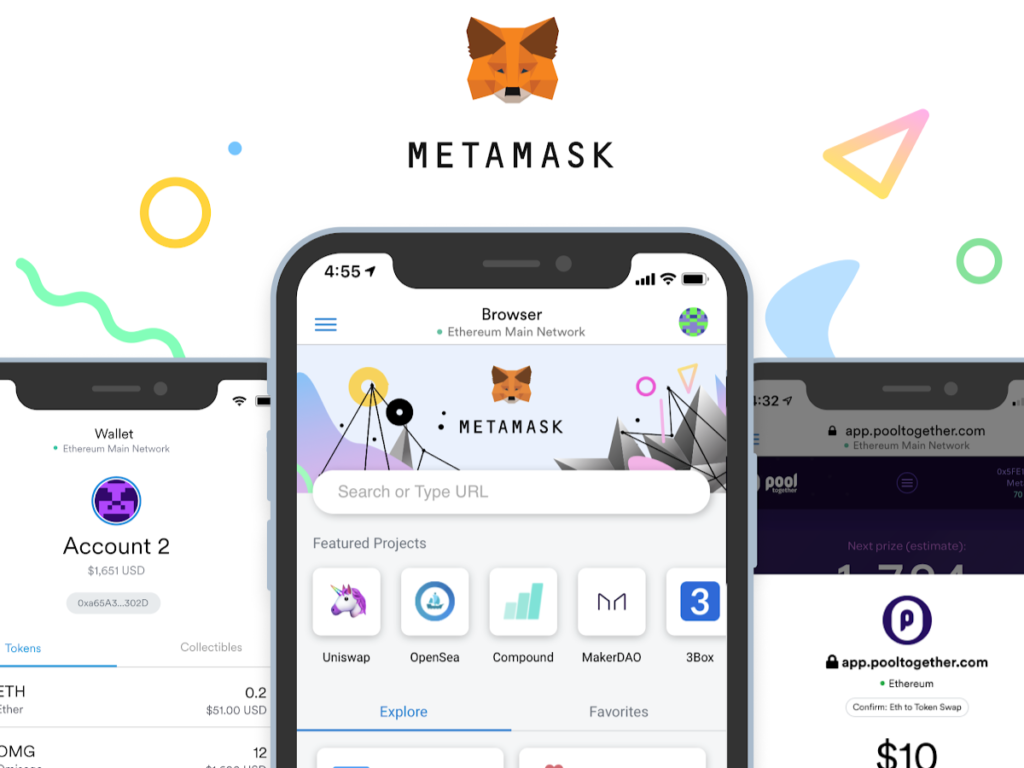
Trust Wallet
This digital wallet app is designed for mobile users and supports many cryptocurrencies, including Bitcoin, BNB, Ethereum, etc. It has a Built-in Web3 Browser that allows you to explore and interact with dApps directly from the app, facilitating NFT purchases and trades on the go.
Trust Wallet provides a secure environment by storing private keys locally on the device and offering biometric authentication features.
All these features make Trust Wallet a versatile choice to manage your digital artwork correctly.
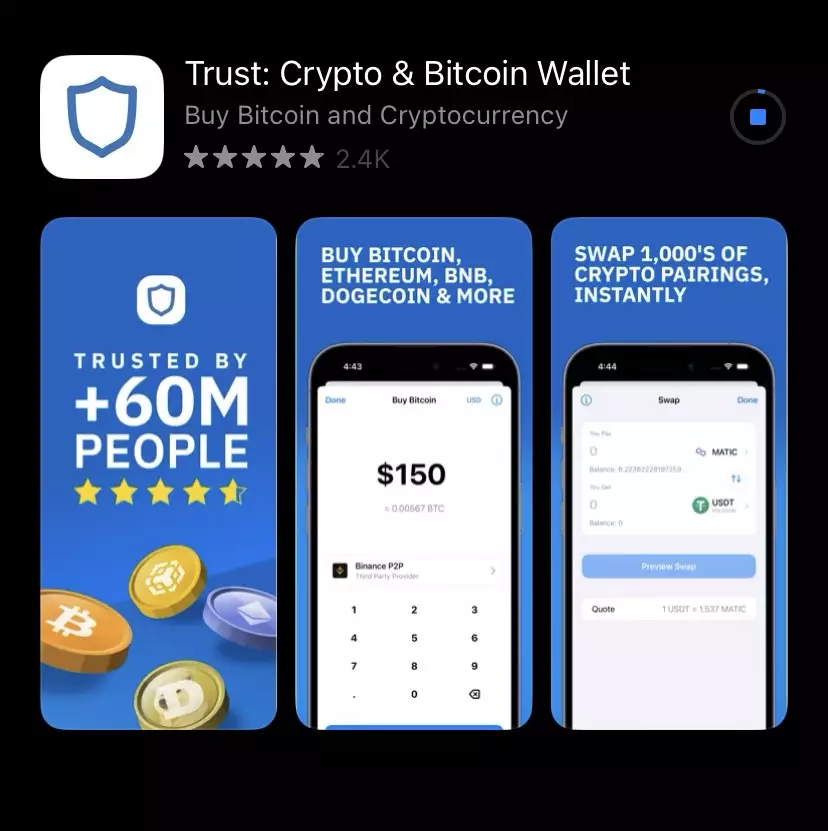
Coinbase Wallet
This wallet is made with beginners in mind and offers an intuitive interface that simplifies the complexities of blockchain technology. Apart from cryptocurrencies, Coinbase wallet supports NFTs and has a reputation for its robust security and transparency.
Coinbase also offers an NFT marketplace where you can sell non-fungible tokens that aims to make the process of minting, purchasing, showcasing, and discovering NFTs easier than ever.
Follow the next steps to sell NFTs on Coinbase:
- Navigate to the NFT section in your Coinbase Wallet and select the NFT art you want to sell.
- Opt for the “List for Sale” option.
- Determine your pricing strategy, either setting a fixed price or an auction.
- Confirm and pay any associated listing fees.

2. Buy Cryptocurrency
Acquiring cryptocurrency is important to pay any transaction fee, whether the listing or minting fee.
Ethereum is the most commonly used digital asset for Non-Fungible Token transactions. This is because it’s a cryptocurrency supported in most NFT Marketplaces and because of its flexibility and security.
Here’s how you can buy Ethereum:
- Select a reliable exchange.
- Set up an account.
- Choose a payment option like bank transfer, debit card, or credit card.
- Purchase the amount of Ethereum you want.
- Transfer the cryptocurrencies to your wallet.
When selling NFTs, ensure you have sufficient funds for smooth and complete transactions without problems.
3. Select the Right NFT Marketplace
Finding the best marketplace to sell NFT art is a complex task, but it’s crucial if you want to reach potential buyers and ensure a smooth selling process.
You must consider factors like:
- Gas fees
- The minting process
- The platforms’ user base
You could use these four marketplaces:
OpenSea
Regarded as one of the first and largest NFT marketplaces, OpenSea has established itself as a go-to platform for new and experienced NFT creators.
It runs on the Ethereum blockchain but also allows you to buy and sell NFT on Polygon, Solana, and Klaytn, other blockchain platforms.
One of the features we can mention is that OpenSea supports various digital file formats. It’s a platform where you can sell photos, art, and music. Likewise, you can earn a royalty from secondary market NFT sales because buyers can resell your Non-Fungible Token once you sell it.
A common question among NFT creators is how to sell Non-Fungible Tokens on OpenSea without paying gas fees. This marketplace has a “Lazy Minting” feature that allows you to mint an NFT only after it’s sold, meaning that you won’t have to pay upfront gas fees.
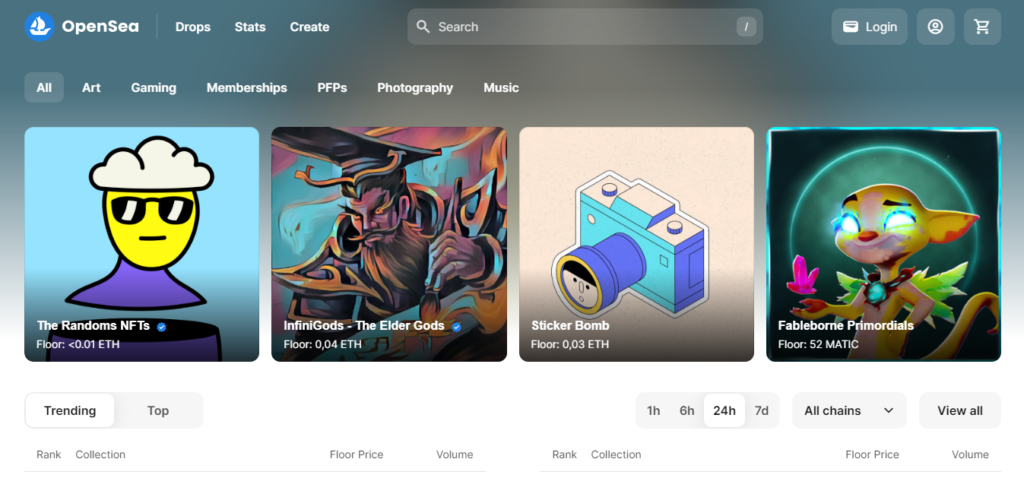
Rarible
This NFT marketplace stands out with its user-friendly interface, making it a recommended choice for you if you want to start selling NFTs related to music, videos, art, and domain names.
Rarible offers you a verified badge, which adds credibility to your listings and profile page on the website. However, the process to get this badge takes a few days, so many creators choose to skip this feature.
Like OpenSea, it also supports the “Lazy Minting” feature, reducing upfront costs.

Binance NFT Marketplace
Binance is the world’s largest cryptocurrency exchange that offers an NFT MArketplace. This platform boasts a vast user base, making it a significant place for NFT art.
You can sell Non-Fungible Tokens from different categories, like:
- Sports
- Art
- Collectibles
- Gaming
- Entertainment
This marketplace has the lowest trading fees among other NFT marketplaces, charging a flat 1% for creators and sellers. And if you want to sell NFTs created by other artists, you’ll have to pay a 1% royalty fee.
The Binance marketplace supports two blockchains: Ethereum and Binance Smart Chain.
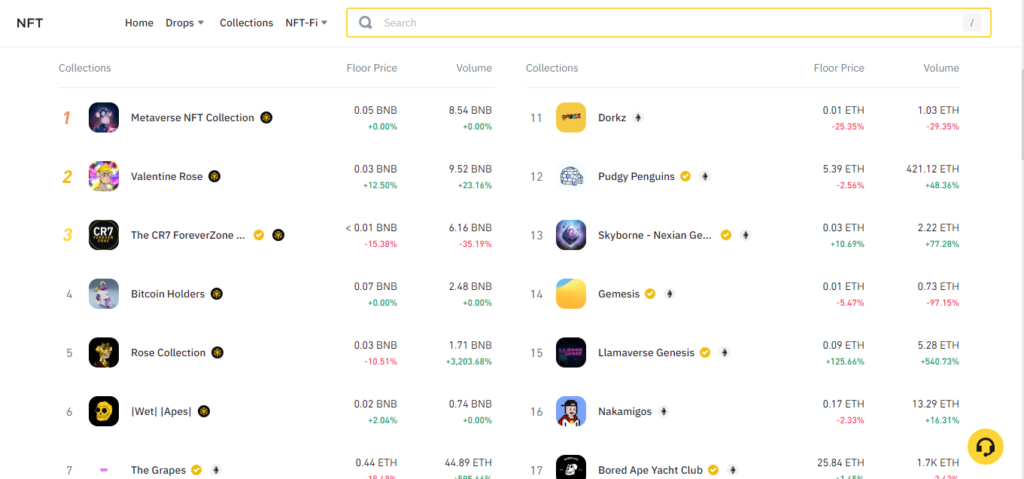
SuperRare
More than an NFT platform, SuperRare is a community. It’s like social media for artists, where you can collaborate, showcase, buy, and sell your work. With this marketplace, you can expand your reach and creativity.
SuperRare’s difference from any other marketplace is the selectivity and exclusivity of its digital artworks, so to sell an NFT, you must apply and get approval from SuperRare Labs.

4. Connect Your Digital Wallet to NFT Marketplaces
After creating your Crypto Wallet and selecting your NFT marketplace, the following step is to connect them. This allows you to interact with the blockchain and mint your assets.
The process may vary depending on the marketplace and the wallet you are using, but generally, it’s a straightforward procedure that involves three steps:
- Visit the NFT platform and select “Connect your crypto wallet” or something similar.
- The marketplace will prompt you to accept the terms and conditions. Once you review and agree, click “Sign.” Your wallet should now be successfully connected.
- You can now start your NFT listing, buying, or bidding.
This only applies to decentralized marketplaces such as OpenSea. For platforms like Binance, you must create and verify an account through KYC methods.
5. Price Your NFT
The valuation of Non-Fungible Tokens is a complex subject for NFT sellers. While many believe that an NFT’s worth is determined by what someone is willing to pay for it, a few elements determine the asset’s value.
Consider the factors below to start selling NFTs on marketplaces:
30-Day Average Price
This average price, derived from historical price trends, offers a snapshot of the NFT’s market performance and acceptance over the past month. This metric gives you:
- Trend patterns
- Price spikes
- Demand increase
For NFT sellers, the 30-day average becomes a benchmark, assisting them in setting a competitive and realistic price for their NFT.
It allows you to position your token to align with current market expectations, ensuring that you either undervalue your NFT art or set an overly ambitious price that might deter potential buyers.
Rarity
This factor elevates the value and desirability of your NFT or art gallery. As with traditional collectibles, the rarer an item is, the more sought-after it becomes. Unique attributes and distinguishing features of an NFT differentiate it from the masses, making it a prized possession for collectors and enthusiasts.
For instance, the Bored Ape Yacht Club, a renowned NFT collection, has certain apes with the “laser eyes” trait, a feature found in less than 1% of the entire set. This scarcity makes these particular apes more desirable and positions them as important pieces in the market.
The concept of a rarity item in the NFT space goes beyond visual traits. It can encompass limited edition releases, particular functionalities, or exclusive access to real-world experiences.
This is a strategic move to enhance your digital content value and appeal.

Utility
This factor transcends the NFT’s visuals and artistic appeal and delves into what the holder can “do” with it.
For example, a Non-Fungible Token that can be used as a virtual item in a popular online game or as a ticket to a virtual concert adds a tangible dimension to its value.
This functional aspect transforms the NFT from being just a collectible to an asset with a practical application. Such utility-driven NFTs often find themselves in high demand, especially in communities or platforms where their use case is recognized and valued, giving the chance to sell those tokens at a higher price.
Creator’s Reputation
The NFT creator’s reputation significantly determines the digital asset’s value and desirability. Established creators with a record of consistent quality, innovation, and engagement often have a trust factor that newcomers might still need to possess.
If you are new to selling an NFT, you might initially face challenges establishing your credibility. As a strategic approach, you can price your assets closer to the historical average of similar works, as we mentioned in the 30-day average price factor.
As you consistently deliver quality and gain recognition, you can gradually increase the pricing, reflecting your growing reputation and the trust you’ve gained within the community.
6. Create a Listing
Now, it’s the time to make money by selling your NFT art. And for that, you need a listing.
This process involves strategic decisions that impact the visibility and value of the NFT.
To start, log into your preferred marketplace and click “Create.” Then select “NFT” and choose the blockchain you want.
For example, in Rarible, you can select Ethereum, Polygon, or Tezos. After this, enter an appealing title and a description.
You can use two pricing structures to sell an NFT in the marketplaces. The first one is the auction, where bidders can push the price to get hold of your token. The other option is to set your NFT with a fixed listing price.
Let’s understand these pricing structures better.

Auction
Auctions introduce a dynamic pricing mechanism, allowing potential buyers to place bids on your NFT. The highest bidder at the end of the auction period secures the asset.
They can be exciting and competitive, often driving up the final sale price, especially if the NFT garners significant interest.
This method benefits unique or highly sought-after pieces, allowing the market demand to determine the final price.
Setting a reasonable starting price bid is essential to attract initial interest.
Read more about What is NFT Auction.

Fixed Price Sale
Opting for a fixed-price sale means setting a non-negotiable price for your NFT. However, buyers might contact you privately with a counteroffer, sometimes lower than expected.
This method offers clarity and simplicity for you and potential buyers. The price remains constant unless you decide to modify it.
This is a suitable option if you have a clear valuation of your work and don’t want to negotiate prices.

7. Add an Attractive Description to Sell Your NFT
When you decide to sell an NFT, the description and title you provide play a crucial role in attracting collectors and converting the value of your digital asset.
A compelling description makes the difference between a sale and a missed opportunity.
So, provide useful information behind the NFT. For example:
- Significance
- Theme
- Creation motives
Some of the most successful NFTs sell because they have a captivating story behind them, whether it’s a representation of a meaningful moment or an iconic film character.
However, it’s essential to balance depth and brevity in your description. While collectors appreciate profound thoughts and insights, the digital marketplace often demands quick decisions, so it’s crucial to come to the point promptly.
Dive into the purpose of your token, its rarity tier, and any additional perks that might come with its ownership. Hinting at these benefits can pique the buyers’ interests.

8. Pay the Listing Fee
The listing fee is a surcharge you must pay in all marketplaces when you want to sell an NFT.
When you hit the “Create” button, the marketplace will automatically charge the listing fee from your connected wallet. If it lacks sufficient funds, the minting process will fail.
The listing fees vary based on the marketplace’s policies and the current state of the blockchain network.
For instance, OpenSea has a 2.5% transaction fee, and SuperRare charges a 15% fee for first-time sales on the primary market.
Gas fees also come into play, especially on the Ethereum blockchain. These are meant for recording transactions on the network and fluctuate based on network activity.
Do your research and get well informed about all potential costs before listing to ensure a profitable selling experience.
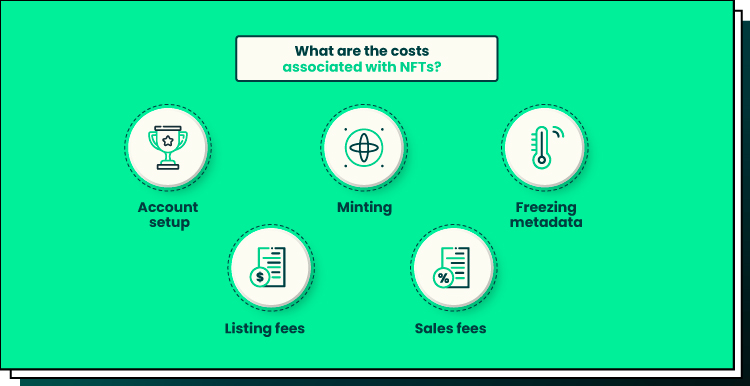
9. Manage and Promote Your Listing
Managing your listing is crucial to ensure it remains relevant and visible to potential collectors.
Some things you can do include:
- Updating the description
- Adding new images or videos
- Ensuring all details are accurate
It’s essential to monitor the market trends, adjust the price if necessary, and respond promptly to any inquiries or offers from interested parties.
Now, promotion is the key to maximizing the reach of your NFT. Use social media platforms like Instagram, X, and Facebook to boost your NFT’s visibility.
Share your listing on art forums, Reddit threads, and other niche communities to attract a more targeted audience.
Engaging with followers, collaborating with influencers, or hosting giveaways can create a buzz and help you sell an NFT.
The more eyes on your listing, the higher the chances of making a sale.

Selling NFTs Has Never Being Easier
The realm of NFTs has opened millions of opportunities for digital creators, artists, photographers, musicians, and more, initially the chance to earn money from their creations.
Selling NFTs requires you to understand the importance of having a secure digital wallet, understanding the dynamics of cryptocurrency transactions, selecting the right marketplace, and effectively pricing and promoting your Non-Fungible Token.
We recommend you stay updated with the latest technologies, trends, and market dynamics.
Related posts:
– How to Sell NFT Music
– How to Sell NFT Art For Free
– How to Sell NFT Photos
– Best Ideas to Sell NFT
– What is NFT Auction